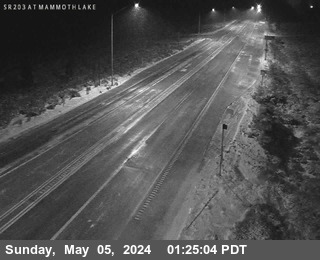Brought to you by Howard Sheckter
2013 in California to End W/ Driest year on record for Several Areas…San Fransisco for one, Statistics Now….All the while there is no end in the Dry Spell at this time….
Tuesday December 31, 2013
Apparently the upper ridge is doing nothing but shifting east and west between 140W and 120W and sometimes flattening. If the upper ridge remains in this mode, all we can expect is either a mild pattern in its east mode with warmer then normal temps for this time of the year. In its west mode, shots of cold air advections with either light snowfall or showers and wind. The ECMWF has been touting an westward shift in the upper ridge the 2nd week of January. That would lead to colder weather with windy conditions over the upper elevation’s along with some light snowfall during the 2nd week of January.
I have not heard what is causing the severe dry spell. However one thing I do believe is that it is not global warming. There are too many areas that are having severe cold hemispherically…..
Dr Howard and the Dweebs……………………….:-)
Wednesday AM:
ECMWF is attempting to retrograde the long wave ridge west…..where it was in early December with very cold weather returning by the 2nd week of December. There will likely be some snowfall in this pattern but light amounts week 2. The GFS is not in agreement thus far. However, typically the EC is the better model on the west coast at this distance…..so stay tuned…………………………..:-)
The MJO is in Phase 6. It is expected to move to phases 7 and 8 the next few weeks. Tropical convection will move east toward the dateline and possibly beyond. Will keep an eye out for any funny stuff if you know what I mean….. 😉
Dr Howard and the Dweebs…………………………..:-)
From Tuesday Night:
Happy New Year from the Dweebs………………………..With only about an hour left of 2013, here are some of the records for the driest year on record for Central California. Aren’t you lucky to be around for a once in a lift time experience?…………………….Not!
Thanks to Jan Null, CCIM, here are the records for many areas in California and SFO, which is due west of Mammoth Lakes. Compare to water years of past.
(Read and Weep!)
1. http://ggweather.com/2013rain.htm
2. http://www.wrh.noaa.gov/media/mtr/online_pubs/press_release/2013_Calendar_Year_Precip.pdf
4. http://www.cnrfc.noaa.gov/awipsProducts/RNOWRKCLI.php
————————————————————————————————————————————————————————————————–
Although dry weather is expected through the 1st week of January……some cooling will occur in back of a storm headed for the Rockies Saturday……There will be lots of high level cloudiness over running the upper ridge off shore, throughout the week…..This current pattern in January is historically very stable with the westerly phase of the QBO and +AO. The AO has gone weakly negative recently and is expected to stay that way through the first week of January then go moderately negative second week of January. With the NAO in neutral mode, forecasts show that the PNA region which is an indicator index relevant to the location of the eastern pacific ridge will remain neutral the next week. Simply, the upper ridge will remain far enough west to allow some cooler air over the far west from time to time. Remember that in order for the PNA (Pacific North American Circulation Pattern) to be positive, 500mb positive height anomalies need to be centered over British Columbia rather than in the Gulf of AK area. On another note, if the PNA region was strongly positive now, we would most likely have above normal temps at and above 8000 feet both day and night for weeks! So thank goodness that is not the case today.
So what is there to look forward to in the weeks ahead? Not much…….
The quasi biannual oscillation (QBO) remains strongly from the west. Last November, the QBO actually strengthened as a comparison to Oct when we were head-faked into believing that the QBO was beginning to weaken toward neutral. According to Research, when this QBO begins to weaken, there is a significant increase in high latitude Northern Hemispheric blocking. Index: (Sept) 13.12 Oct (11.69) Nov 12.45; Dec??
In a few days, the index for December will be out and will be of interest to see if the QBO is in a weakening phase. Because it is an oscillation, it has a cycle and the timing is coming soon for the flip from positive to negative. For strong High latitude blocking an index of between +8 and -8 is best for the index.
For the index see: http://www.cpc.ncep.noaa.gov/data/indices/qbo.u30.index
Now high latitude blocking in the NAO region will not help California’s dry spell. In fact it may make it worse. However, it will have a profound effect upon the NAO and AO to negative. That in turn may disrupt the current pattern. (wishful thinking?)However, more likely, the north, central and parts of the eastern CONUS will turn very cold as meridianal flow develops. Odds are, when and if this happens the PNA region will become strongly positive and the Upper ridge may even become more orientated over California and not off shore. Mild (Dry).
Back to the MJO….. The forecast is for the MJO to strengthen in phase 6/7 week 2. SEE: (NCEP Global Bias-Corrected Ensemble Forecast System) See: http://www.cpc.ncep.noaa.gov/products/precip/CWlink/MJO/CLIVAR/ncpb.shtml And the EC; European Centre for Medium Range Weather Forecasts Ensemble System (EMON) See: http://www.cpc.ncep.noaa.gov/products/precip/CWlink/MJO/CLIVAR/emon.shtml
The MJO strengthening and moving through these phases is not going to break our dry pattern. We may get a small storm or two mid month in a transition but not what we need. However, AAM is on the increase with mother nature putting the peddle down which may cause amplification over the PNA region.
Furthermore, according to the CPC, 30th of December report, enhanced convection along and south of the equator in the western pacific, due in part to the MJO could contribute to long wave amplification across the PNA region during week 2 and beyond, enhancing the likelihood of cold air outbreaks across the Central US.
Comment: Cold Air out breaks over the Central US and amplification in the PNA Region is not what we want to see in the coming weeks!!!!!!! This still spells a Dry,Dry pattern for California.
If, and this is a big if…..the MJO stays strong and progresses into Phase spaces 8 then 1…….We could pineapple-up. However, at this time, that is just more “Hope and/For Change”
Forecast:
Dry through next Monday, highs mostly in the low 50s lows in the 20s. Breezy Friday and cooler Saturday (Highs in the 30s) A slight chance of a storm about the 8th-9th of January……The Dweebs will know more, later this week.
The Dweeber




